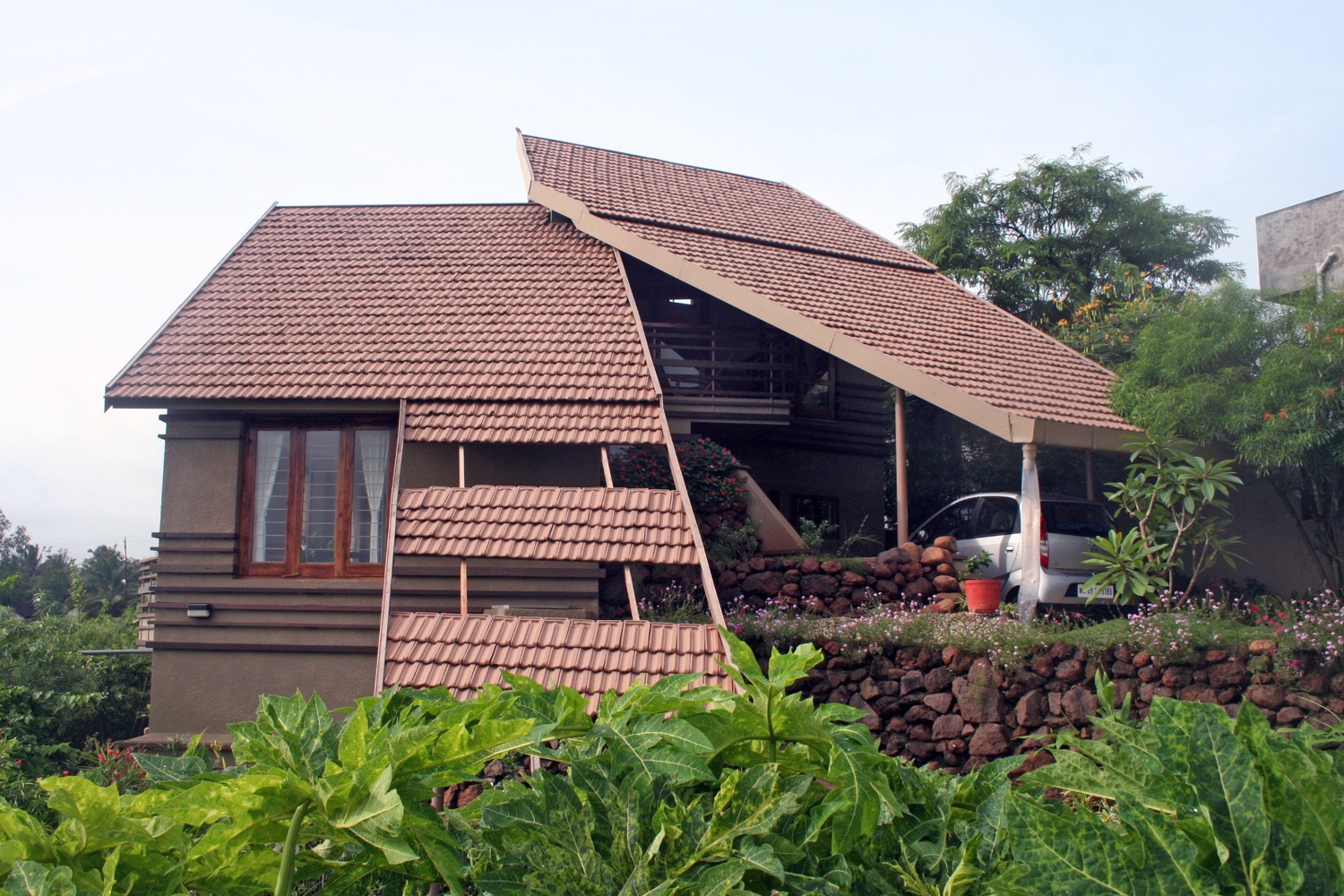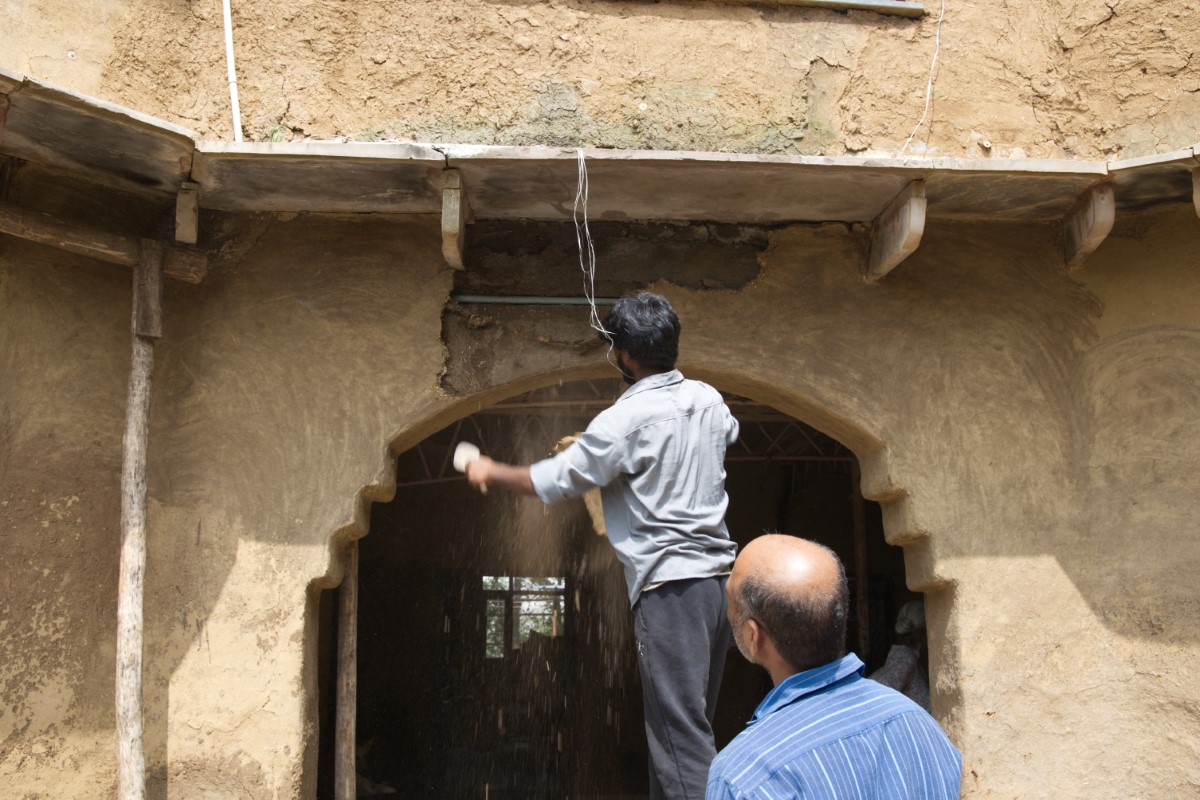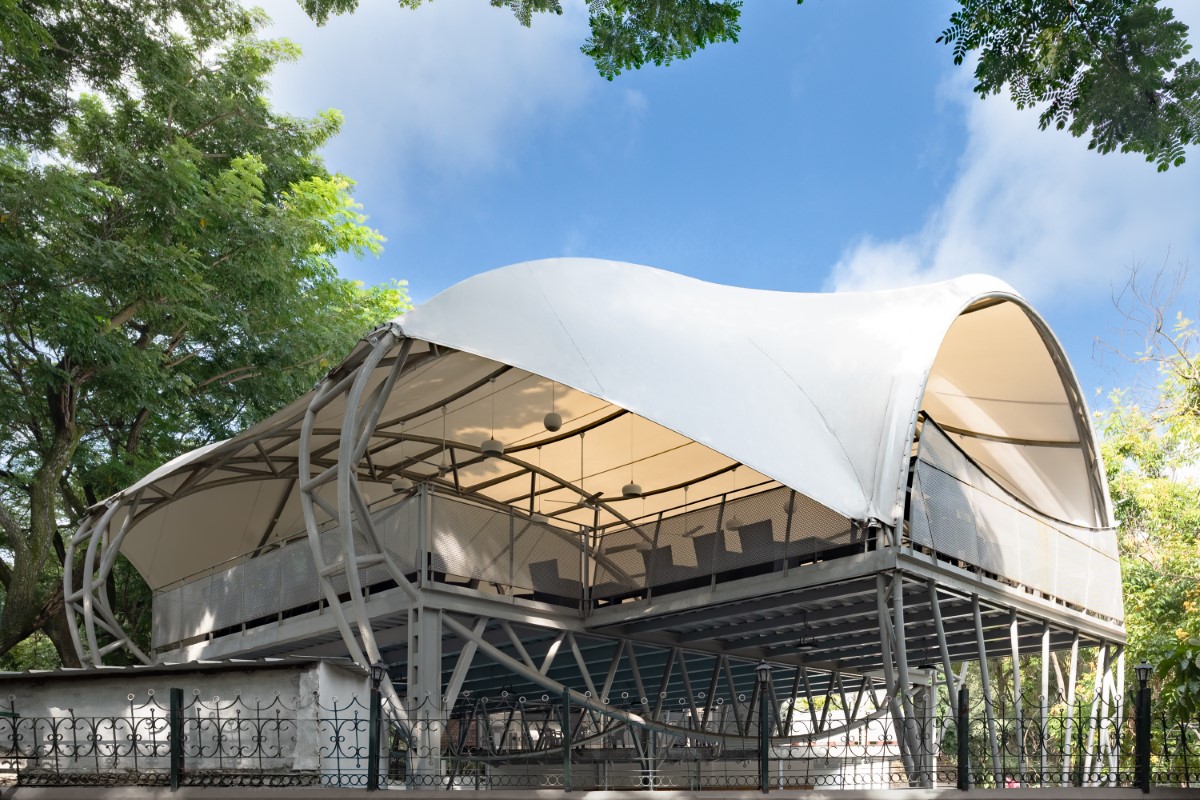
I had always wondered whether I could create a habitat whose ecological footprint on this planet was minimal…. during its construction as well as during its functioning as a family residence…. whether I could live happily in 50% of the area of my present inherited residence…. whether making of this residence could indirectly help in reducing the tremendous inequity that we see around us. Normally, most new, lavish, private residences tend to increase this undesirable inequity in our society. Thus, instead of indulging in a big 60th birthday bash, I decided to go on a ten days? solitary retreat to ponder on these issues, while re-examining my life and the direction it could take during the coming 10 -20 years. After the intentional reduction in my architectural commitments, I would be having a fair amount of free leisure time. I was thinking of using this for planning and running a ?centre for unlearning?, writing and designing a couple of new books, making a film on ?space?, more reading, research, involvement in architectural education, meditation and more time with family/ friends. Besides these, I realized that I felt truly disturbed by the unjust inequity in our society.
Thus, I decided to part with a major part of my savings to create a ?human equity & dignity fund?, that would be used to help the needy, deserving individuals as well as institutions working towards equity and their better quality of life. In the last three years, over rs. 60 lakhs have been used for this purpose. Then, in order to increase this fund?s corpus to benefit a larger section of the society, I thought of selling our present large ancestral bungalow that is in a prime, busy area. This would fetch a tidy amount that would mainly go into the above fund and a small part of it to our daughter in New Zealand. This meant moving out of our big old bungalow into a new smaller house which I felt would be beneficial in many ways – – We would move to a more open, natural, less polluted and quieter area on the outskirts of the city in a middle class housing colony. – We would simplify our lifestyle further and live in a house that is much smaller, less energy intensive, more self sufficient in terms of electricity, water, waste recycling, gas, vegetables, fruits etc. This house would be built as much as possible from waste , discarded, recycled materials, thus reducing its environmental footprint. – Moving out of the 50 year old large, energy intensive bungalow, which is now in a noisy area, with increasing maintenance expenses and problems would come at the cost of leaving a premium locality that was more central and closer to all amenities. – This purposeful, conscientious shift in location as well as in our lifestyle was meant to help address our social responsibility, as the amount received from the sale of this old property would be used for causes where it is truly needed – for the ?have nots? and the underprivileged in our society to live a better life of human dignity. So, how should this new house be? Should it not be a more sustainable, appropriate alternative to the present houses? To be truly sustainable, I feel its design should be rooted in genuine sustainable values rather than in green ratings.
,/center>
What are the characteristics of such sustainability which drove me to make this house in spite of some opposition from my wife ? – True sustainability is born out of the holistic understanding of our being an intrinsic part of this fascinatingly interconnected web of life – Then, compassion and empathy towards everything on this planet earth ensues spontaneously. – This in turn brings about caring and concern for all species, especially the poor and needy humans as well as the deteriorating environment. – From true compassion and caring springs a sense of contentment…. from which comes about a life of honest simplicity that consumes minimum resources and energy. Thus, we have decided to call this house as ?Laya?, which means something that is in harmony and in sync with Life itself. The small 465 sqm plot in a middle class society, on the outskirts of Kolhapur was purchased at a comparatively low price due to its steep topography ( 5 m level difference within a site width of 15 m) and the abandoned undeveloped road in front. This level difference was used to our advantage by tucking in the domestic help?s residence and a large rain water harvesting tank at the lower level. The house is mainly on the ground floor level with a porch, living, dining, sit out balconies, kitchen and one bedroom + toilet. The mezzanine level has one bedroom/study + toilet + terrace. It is designed as a compact, unified, no frills house that seems to grow in an organic manner from the soil. The house form spontaneously creates spaces in and around the house that are informal, free flowing and harmonious. The inside space is a single volume space encouraging the interaction within the family and guests and also with the outside natural views. Flexibility, multiple use of space and privacy can be ensured by opening or closing the folding doors /partitions and curtains. Thus the house can have one bedroom, two bedrooms or three bedrooms by partitioning certain spaces. This too helps in saving of valuable resources and costs. The design of the house brings in plenty of fresh air/ventilation and natural light thus reducing the use of electricity for lighting, fans and eliminating the need for air conditioning. This habitat attempts maximum feasible self sufficiency in terms of artificial lighting, water, domestic cooking gas, kitchen vegetables and sewage/sullage disposal. Connectivity with nature was a major design parameter. Thus evolved a design that not only framed views of the outside nature, but created numerous planters inside (even big ones in the toilet) and outside the house to bring nature inside. Semi covered sit-out spaces, balconies and terraces with plants also helped in connecting to nature and to the outdoors. It is a joy to watch peacocks and other birds frolicking near this house.
A brief description of the construction process will try and justify some of the choices and decisions made during its execution. ? To start with, it was necessary to define our plot boundaries (especially with the steep slope) with a compound wall/ fence. The stone wall was built with stones from old demolished buildings and the upper grille + the gate was made from the waste/scrap steel bars from other construction sites. The wall on the slope enabled us to fill about one meter of soil to reduce the level difference to around 4 meters. This soil filling also allowed trees/plants to grow well on our rocky site. ? A bore well was drilled to ensure some amount of water security and self sufficiency…though we did not strike much water. ? Plum concrete with waste stones (thus less cement concrete) was used instead of the typical, expensive r.c.c. to make the retaining walls of the large rain water harvesting tank and servant?s room at the lower level. ? All concrete was made by adding 25 % of fly ash (a waste by product of the cement industry. ? Most of the reinforcement bars for columns, beams and slabs were bought from the scrap market (obtained from old demolished buildings). ? The filler slabs were designed with split bamboo pieces from old discarded scaffolding and with 80mm long waste pieces of 100mm dia. p.v.c. pipes. These were found as inexpensive alternatives to the normal terracotta bowls (which are more expensive than the same volume of concrete). ? The masonry was done with three types of blocks.. .. bricks from demolished buildings, ..interlocking fly ash bricks that used very little cement mortar ..light weight aerated, autoclaved blocks made from very little cement (65 ? 70% fly ash) and constructed with self curing adhesive mortar with no cement. ? Corner stones and other stones from old demolished buildings were used in some masonry work and for making steps in the site development. ? White stone pieces obtained while dressing these stones on another site were procured. They were used to pave the pathway. Some were broken further into 10 to 15 mm aggregate (chips), which were used in the landscaping. ? At another demolition site , we found dressed round black stones in the facade wall masonry. These were used as cobblestones for a service pathway. ? Stones lying around in Andur and other places were brought to our site to do the stone pitching for retaining the terracing in the landscaping. No cement was used here too. They were also used in the plum concrete. ? Smooth rounded stones from our old bungalow were used for landscaping. ? Doors, windows, stairs, mezzanine floor, railings, false ceilings and external wooden strips? facade were made from one of the following… .. old wooden members sourced from a number of demolished buildings .. wood obtained from large pinewood, packaging crates .. ready made discarded door-window frames and shutters .. from two of the many teak trees planted by me 28 years back on my Nadhawade farm .. only a small quantity of wood was bought from the regular market .. tree guards for trees to be planted elsewhere in the housing society were made from leftover wood as well as from bamboos planted by me on our farm land ? Most of the structural steel members such as pipe columns, pipe purlins, m.s. angles, channels etc were also bought from the scrap yard. Their old holes, welding joints have been retained as memory. ? Not a single new mangalore roofing tile was purchased for this house. All old tiles from dismantled houses were collected, cleaned, painted and used for the roof. ? In the case of flooring tiles, we visited tile depots and requested the shop owners to show us their damaged, rejected tiles? yard. Broken, damaged tiles that are unusable in the normal sense were selected and brought to our site. … small and big vita gold natural stone pieces were used in a designed pattern for the entire ground floor flooring. … eight different types of rejected, broken ceramic / vitrified tiles (from the same colour family) were brought to the site to be cut and used in a specially designed pattern in the toilets. … thick rough Shahbad tiles from old dismantled courtyards and parking areas were cut and used for the porch and the driveway. Very small white chips were used to fill wide cement mortar joints. … old discarded Kadappa counter tops were reused to make the servant?s kitchen counter and shelves. ? Even for the interior furniture, some of the old dismantled plywood cupboards, old glass shelves and table tops, old beds, table, curtain rods etc. from the old bungalow were used. Old coir foam cushions were modified to suit the new designs.
Eco friendly bamboo was used for the sofas, centre table, dining table and chairs. All cupboard handles are also made in small bamboos. Simple, inexpensive cloth is used instead of mica laminates for cupboards and doors. ? A large rain water harvesting sump has been created to store water, from where water is pumped to the overhead tank for daily use. The municipal water supply line as well as the line from the bore well also supplies water to this tank during dry season. ? The filter for this rain water tank is made from old discarded plastic barrel with graded gravel and sand. ? A separate, special drinking water storage tank is constructed on the first floor terrace. The rain water from the topmost terraces is filtered and collected in this for year round use. ? Both the overhead and this drinking water tanks are made in ferrocrete. ? Saving in electricity consumption from the grid is brought about by … … using photovoltaic solar panels with an inverter for all illumination needs … using solar water heating system for all water heating needs … use of l.e.d. and c.f.l. lights … non use of air conditioning anywhere … good natural lighting and ventilation Our electricity bill that was around rs. 2800/month in the old house is now around rs. 500/month. This is mainly for the pumping + t.v. use by us and by the servants. ? Use of old cables, light fittings, fans was encouraged. ? The terraced landscaped beds were planned as per the contours to mainly have edible landscape rather than an ornamental one. Today, many of our meals comprise of the vegetables from our garden. ? The horizontal wooden strips with vertical g.i. wires tied at 15 cm intervals on the external facades are designed to support vegetable creepers and climbers. These strips also help in shading the walls considerably between 10 a.m. and 2 p.m. They also act as perches for many birds in that area. A bird bath kept on the terrace is widely used by them.
-
- Cost :rs.1025/sft INR
-
- Area :465 sqm SQ.M
- Client / Owner :Manasi & Shirish Beri
















